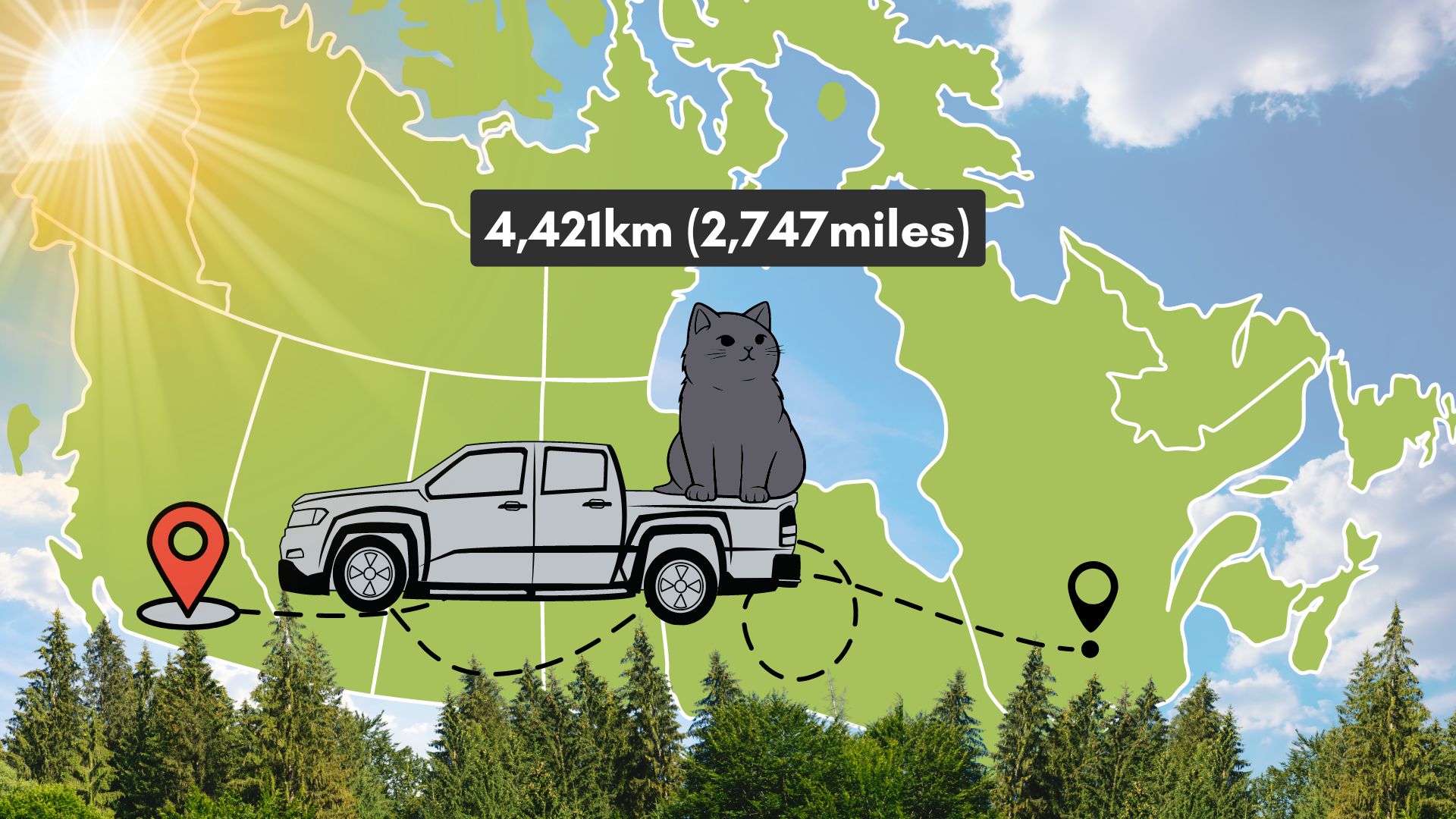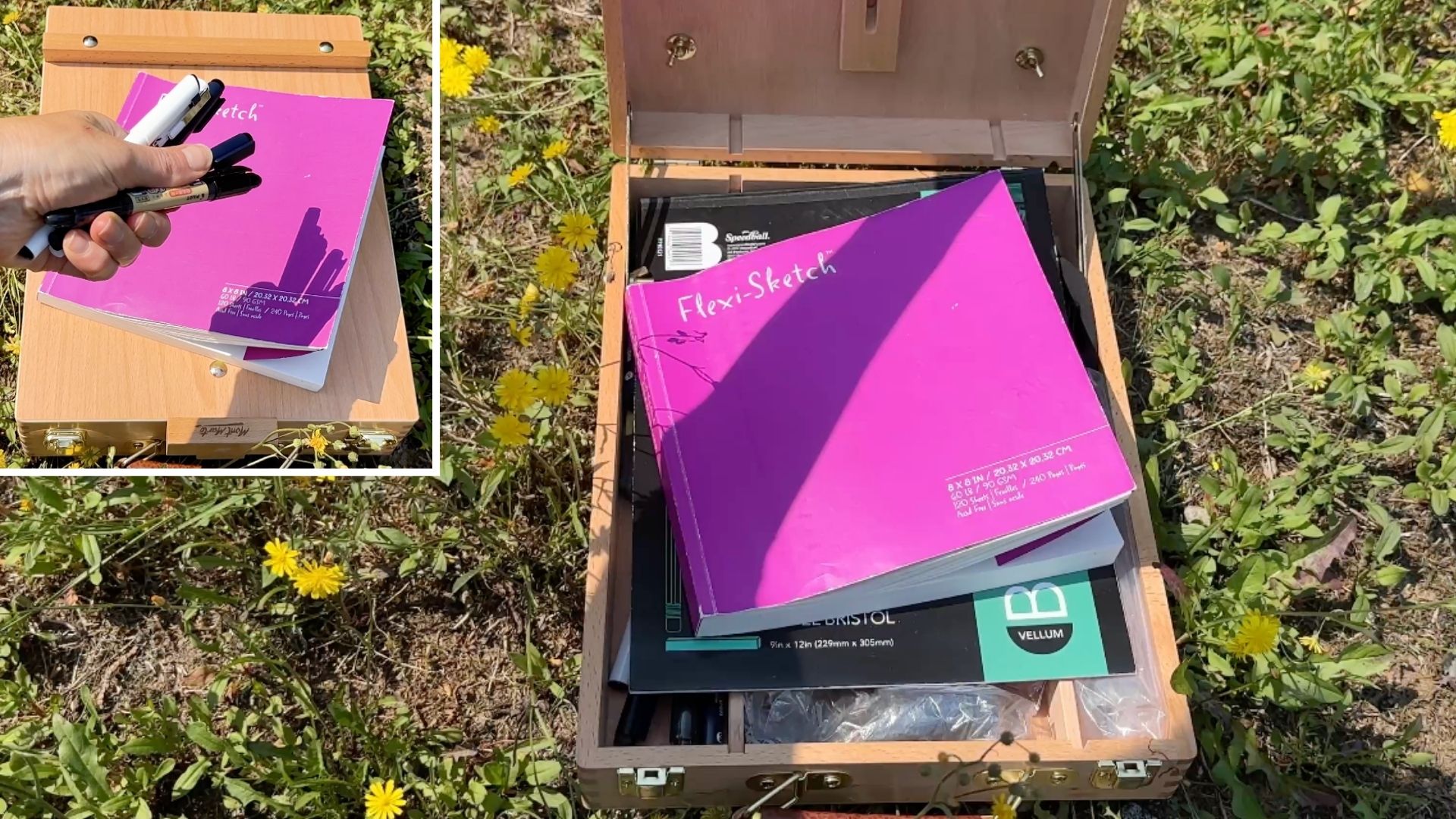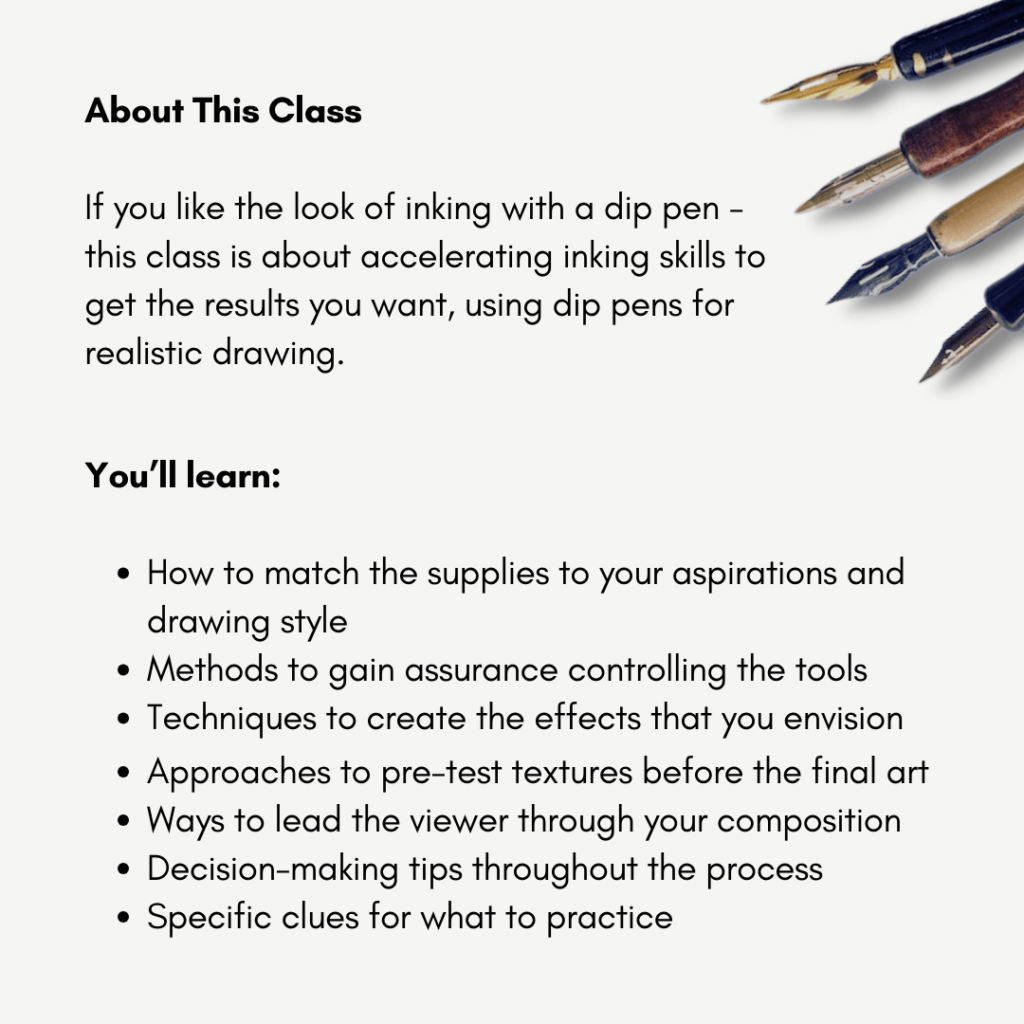How to Sketch with Ink on a Hot Summer Road Trip
Do you want to accelerate your inking skills and sketch in nature?
This Hot Summer Road Trip Challenge is for you.
Try any of these 5 exercises to help you create anywhere, anytime, using any inking supplies.
DISCLOSURE: I earn a small commission when you use my affiliate links to purchase something. Learn more about the affiliate partner disclosure by reading the Terms page.
Why a Challenge?
Now and again we need a challenge. Challenges make us realize there’s a workable solution to most obstacles.
You know that little voice sometimes that says “I’d love to practice sketching but, I don’t have time, and I don’t know what to draw, my favourite pen is out of ink…”.
Lack of time or having the right gear are common obstacles to doing just about anything that requires effort.
Whether it’s exercising, studying, cooking a healthy meal, or practicing fundamental techniques – there’s an excuse for avoiding it.
You’ve likely heard the tools don’t matter. That … “you should be able to create art using anything”.
For master artists, like James Gurney, the materials, their setup, or having enough time, all of these are irrelevant – they can create awesome artwork anywhere, anytime, using any supplies.

I’m full of excuses when it comes to producing my best work. My preference is to have everything perfect;
- the right materials,
- proper lighting,
- an ergonomic setup,
- photographic references, and
- a full day in front of me.
But I’m also aiming to improve.
And a recent Hot Summer Road Trip across Canada was the ideal challenge.
This challenge helps you create anywhere, anytime, using any supplies.
Drawing Skill Helps Your Inking Technique
I’ve been told: “To advance your inking technique you must first improve your drawing skills.”
The best exercise to improve drawing skills is sketching from observation, especially out in nature, since the outdoor elements can affect your drawing performance in unexpected ways.
So, introducing a challenge as part of your art practice routine will not only improve your technique it can also change your perspective on what you’re capable of.

Exercise #1 – Plein-Air Direct-to-Ink Sketching
For my first plein-air sitting, I sketched a faraway treeline hugging the lake (pictured below).
I could barely make out the outlines of the individual trees.
The challenge with this sketch was simply to interpret the different shapes I could see by shading the forms with contrasting textures.
To increase the difficulty, I sketched directly to ink without a pencil underdrawing.
It reminded me of what I had read about Claude Monet.
He created with spontaneity, capturing natural parts of a landscape or a scene with quick casual brush strokes. He painted exactly what was in front of him – instead of sketching a scene and then completing it comfortably in his studio, Monet painted the entire work in the open air.
This became known as the plein-air technique.
Exercise 1 – Learning Objective: To interpret the landscape and different shapes with quick, spontaneous strokes.
Helps with: Growing comfortable with the plein-air technique of drawing exactly what was in front of you.

Exercise #2- Sketch Whatever for 10mins.
For my second sitting, I drew parts of whatever was in front of me, no matter how complex or uninteresting.
I drew straight to ink, 5 to 10-minute sketches of various subjects.
With these sessions, I focused on the direction of light to inform where to ink the shadows.
For the first exercises, my sketches turned out terrible.
The pressure of drawing on sight – with everything being different than what I’m accustomed to, made me forget the art fundamentals from my master studies.
I felt hurried to capture what was in front of me quickly and very disorganized. To add to my discomfort, it was intolerably hot and the mosquitoes were relentless.

Bonus Challenge: Use a Single Pen
I’ve always been of the mindset to use the best tool for the job.
That’s why I typically use different sizes of pens when inking a piece:
- fine tips for details and far away objects, and
- thicker nibs for objects closest to the viewer.
For each of the sketches on this trip, I used one pen only, the first one I grabbed from my travel toolbox for that session.
To achieve line variety from a single pen:
- I decreased the pressure on the pen for finer lines, and;
- went over them for bold lines.
Exercise 2 – Learning Objective: Speed-drawing with timed sketches, varying the source of light/light direction.
Helps with: Capturing natural light under time pressure, shading techniques, and bonus points for varying the line quality using only one pen size.
For ideas on Art Challenges and the complete guidelines to do Inktober, read this blog article.

Exercise #3 – Spontaneous Fundamentals
Slowing down got me back on track, and then I recalled what I knew about the art fundamentals.
Once I felt more relaxed, my strokes became more spontaneous.
You can see a progression in my sketch by the third exercise.

I became cognisant of:
- The source of light, which tells you where to render shadows, to hatch fewer details or no rendering at all for the highlights.
- Establishing a horizon line, to get a sense of perspective, depth, or scale.
- Featuring a focal point in the composition to help with the arrangement of values.
Exercise 3 – Learning Objective: Not letting circumstances dictate how well you create.
Helps with: Developing resilience as an artist. Apply what you know regardless of pressures or limitations at the time.
Exercise # 4 – Texture Variety
For the next exercise, my focus during the plein-air sittings was on rendering a more distinct variety of textures.
If you’ve been following my work on social media, you know that I rely on photos to reference subjects for my drawings.
I also lean on other illustrators for decision-making ideas for my line work.
A lot can be said about the use of references.
My stance on references is that they are an imperative tool for learning and development – yet they can only take us so far.
If your goal is, like me, to create original work from imagination with confidence, then plein-air exercises are a means to get there.
Some of the artists of today whom I admire for having grown their art skills through a routine of sketching from observation and imagination are:
Exercise 4 – Learning Objective: Knowing how to render (textures, hatching styles) from live observation without the aid of photo references or additional resources.
Helps with: Growing confidence in your rendering skills and building on what you know.

Exercise #5 – Minis
For the remainder of the week, while driving across Canada, on this hot summer road trip, I sketched 15-minute mini-compositions to capture the natural beauty of each scene.
This exercise is a valuable practice for creating quick thumbnail sketches.
When you see something that catches your eye or inspires an idea and don’t have time to sit outside for the full duration of a project, you can ink a mini at the scene. Then, take your sketchbook minis back to the studio and render your final full-size project to your satisfaction.
Exercise 5 – Learning Objective: Capturing a scene within a few strokes, in a smaller format.
Helps with: Sketching effective thumbnails for future projects.

Create anywhere, anytime, using any supplies.
You’ll quickly see the benefits of practicing these 5 exercises, creating anywhere, anytime, using any supplies.
The challenge was amazing training – like running up a mountain with a 50lb backpack.
I can picture how strong my inking skills will be when I return to optimal conditions in my art studio.
In conclusion, if you’re looking to make strides with your inking skills – ask yourself if there are times when you skip a practice session because of an obstacle that is possible to overcome.
This Hot Summer Road Trip Challenge proved that there are opportunities to practice anyhow when we’re willing to change our perspective on what we’re capable of.
I wish you the best with your pen and ink projects.

Resources
James Gurney’s Guide to Sketching on Location


You can take my dip pen class for free on Skillshare with a 30-day trial (and have access to all their courses). Or if you prefer to own it forever, you can purchase my course from Udemy.






Votre travail est vraiment intéressant. Je suis impressionnée à chaque fois. Merci de nous le partager… Isabelle